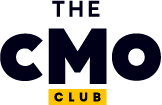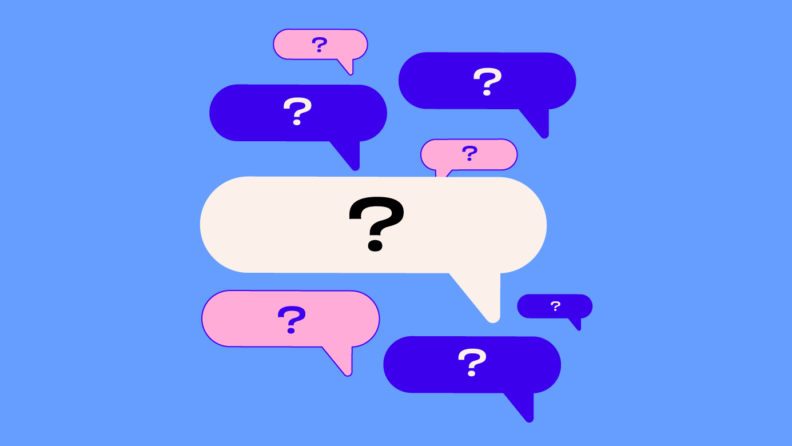I've always thought of B2B SaaS as a unique industry due to its VC-subsidized nature. And as Mark Stouse, Chairman and CEO of Proof Analytics.ai puts it, "Founders, marketers, and VCs thought they could create go-to-market as a deterministic machine. 92% of post-2007 startups have failed. Not exactly a rousing endorsement of the billions spent on demand generation."
So it's not surprising we've seen the rise and rise of the brand marketing conversation. But it gets tricky. How do you educate your leadership on the importance of brand marketing? How do you integrate a brand strategy into an ecosystem built around lead generation?
To help answer these questions and get you started, I sat down with Liam Moroney, Co-founder & CEO of Storybook Marketing and a passionate advocate of brand marketing to put together a series of go-to prompts that help you build a business case for a brand program. Liam also shares how he would answer each question.
I hope at least they act as thought-starters that you return to again and again as brand marketing takes hold in your organization.
Editor's Note: If you prefer to watch than scroll, here's the whole thing: Brand Marketing For B2B CMOs.
1. What do people think brand marketing is and why is that wrong?
Liam's take: We often view brand marketing through a B2C consumer lens, think Super Bowl commercials and omni-channel Nike advertising campaigns. Or as a catch-all excuse for unmeasurable activities: I didn’t generate results, but it was for brand.
Brand is about reputation - namely how the consumer perceives your reputation. None of us own our brand; the brand belongs to the market and buyers because it’s their perception of us. What we can control is how we influence that perception.
2. What do we get wrong about intent data?
Liam's take: What we call intent data is actually activity data. People checking your pricing page may be doing competitive research or logging information for future use. None indicate immediate buying intent.
Single intent signals are rarely a reliable indicator. You need multiple data points grouped together to say this cluster probably represents intent. The key word is probably.
3. What do we get wrong about demand generation?
Liam's take: We cannot create demand. It either exists in the market at a price customers will pay, or it doesn't. No amount of marketing can create demand for something people don't need or want.
The industry has transformed demand gen. into a nebulous term that means different things to different people - from a long-term strategy to a go-to-market motion. What's consistent is how it's measured, bottom-of-funnel metrics like leads, MQLs, or pipeline generation.
This narrow focus on conversion metrics has led to over-indexing on short-term performance marketing at the expense of long-term brand building.
4. What are the signs demand generation isn’t working anymore?
Liam's take: Your clearest indicator is a pipeline closing at a poor or declining rate. A poor close rate means you’re getting prospects to talk to sales, but you were never in the running. Your product was either an outside bet or lower on their consideration set.
The higher you are on that set, the better you are. And brand is the most effective way to get higher on that consideration set. Other warning signs include:
- Sales reporting 'no one has heard of us.'
- Sales team is left out of RFPs.
- Decline in inbound volume.
- Poor win rates vs. sales outbound efforts
- Sales calls report clients thought 'we did something totally different.'
5. Should you abandon demand generation completely?
Liam's take: Absolutely not. The answer isn't brand versus demand. It's brand AND demand. Sustainable marketing programs mix short-term and long-term efforts.
Most of the marketing research out there shows that brand marketing makes demand gen. more efficient by increasing awareness and credibility, while demand gen. converts that awareness into pipeline. It’s the harmony we’ve got out of whack.
6. Where does brand marketing start?
Liam's take: Brand marketing starts with identifying gaps in market perception. Your sales team is a great source for this data, even if it’s anecdotal. You'll often hear them say 'no one has heard of us,' or 'we’re left out of all the RFPs.'
Your share of search is another way of identifying perception gaps. You can use Google Keywords for free (though not very accurate), or tools like Semrush, Ahrefs, or My Telescope (about $20/month). This data tells you where you rank in your category and whether your share is trending up or down.
Next, identify your category entry points. What moments do people consider your product? When do they buy it? What do they think of when they're coming into market for something you do?
7. How do we add brand marketing in a demand gen-centric organization?
Liam's take: Identify inefficiencies in current demand gen spending. For example, your spend on branded keywords could be better spent elsewhere.
Look for activities that can serve both brand and demand purposes - events are a perfect example, providing immediate pipeline opportunities while building long-term awareness.
8. How do we balance brand and demand activation?
Liam's take: The reality for many CMOs is that you can't completely stop what you've been doing. You need to keep doing a lot of what's expected, while starting to add in brand activities. You can start by:
- Finding activities that serve both purposes.
- Developing separate measurement approaches for each.
- Maintaining your brand voice in demand gen. content.
9. How does brand get you into the prospect’s consideration set?
Liam's take: Consider the data: 81% of buyers have a brand in mind before they enter the sales process, and about 80% of the time, they choose their initial top choice (6sense 2024 Buyer Experience Report).
Every purchase for a company is a matter of an individual's professional risk. No one wants the risk of purchasing an unknown company. Being known or familiar reduces the perceived risk, especially in B2B.
That decision is based on brand familiarity and recall. A strong brand presence suggests you’re bigger and a safer bet.
10. How do I defend a budget for brand marketing? Especially when brand attribution is even more difficult than demand generation?
Liam's take: Frame your brand initiatives as problems everyone agrees exist. Do enough prospects know who we are? Do they know what we do or the problems we solve?
Bring data to the conversation. What are our share of search metrics? Gather evidence of your current brand position.
With $5-10k, you can run a market survey and get a meaningful baseline of where you exist in your prospects' minds. You might discover they don't know you provide solutions for certain use cases, or you're sixth in their top vendor list.
11. How do I get sales, product and our other teams on board with the new strategy?
Liam's take: Think of brand as a shared language. Start by running workshops with all teams to identify category entry points. This helps teams understand the market from the buyer’s perspective:
- Product: Is it easy to start using this?
- Sales: Where are prospects coming into this conversation?
- Marketing: Are we addressing problems or just features?
12. What is the best way to measure awareness, sentiment, etc.?
Liam's take: Share of search and branded search volume are good starting points. You can also measure direct and organic traffic trends, or use message testing tools like Wynter to see if people know what you do. If your budget allows, run brand surveys and panel studies.
13. What should we not do when implementing brand marketing into our demand gen. strategy?
Liam's take: Don't do brand just because it's the next trendy LinkedIn argument. It has to be purposeful. It has to be solving a perception gap.
It's not brand versus demand. You're not doing it because demand gen. is failing. You're doing it because demand gen. needs brand support. They're part of the same effort.
The goal? More prospects know you. More prospects think of you. Brand marketing makes demand gen. more efficient and sales more effective. It's a win-win.
What’s Next?
Asides from the webinar series, we've also got a couple of other resources you might find helpful as you consider launching a brand marketing program, such as:
- How to think of brand attribution.
- A curated list of the best brand strategy courses to take in 2025.
- And this treat of a piece on how to measure brand awareness.
You should also subscribe to The CMO newsletter, it's a great way to stay on top of trends and get the latest tips, resources, and guides from our community of seasoned marketing leaders straight to your inbox.



